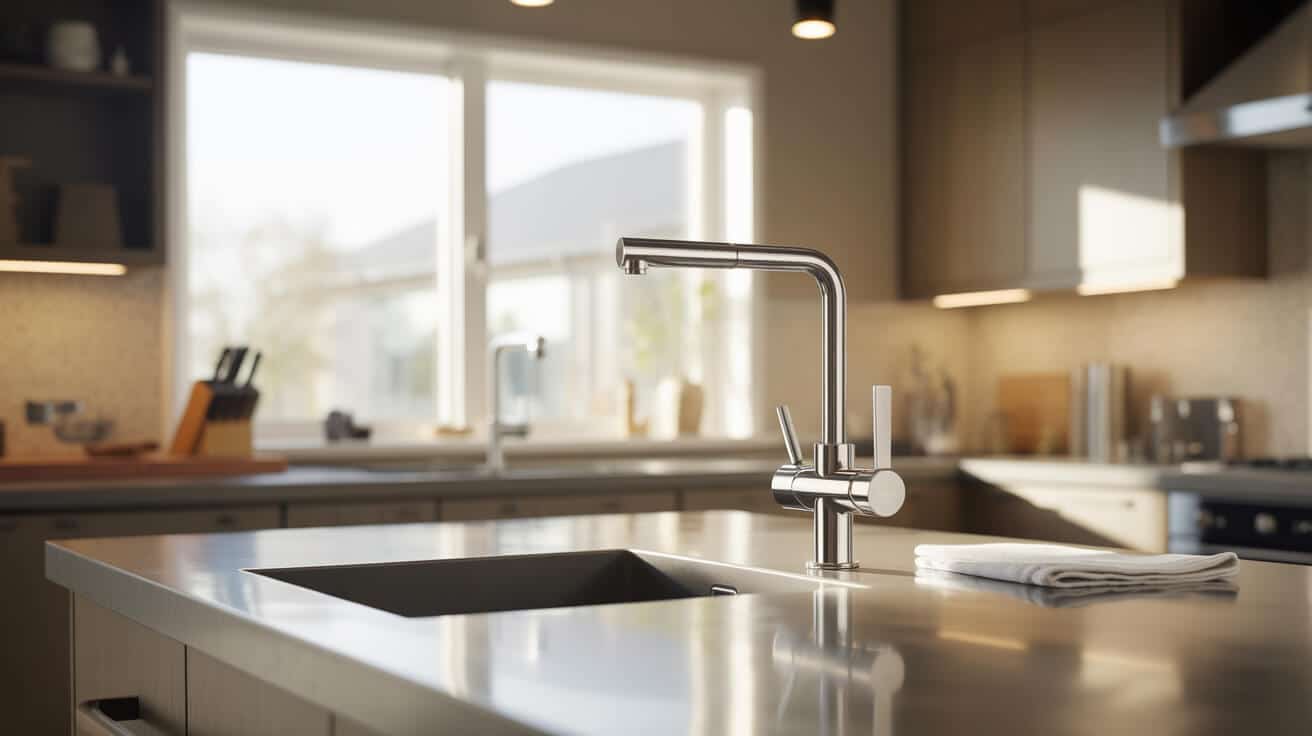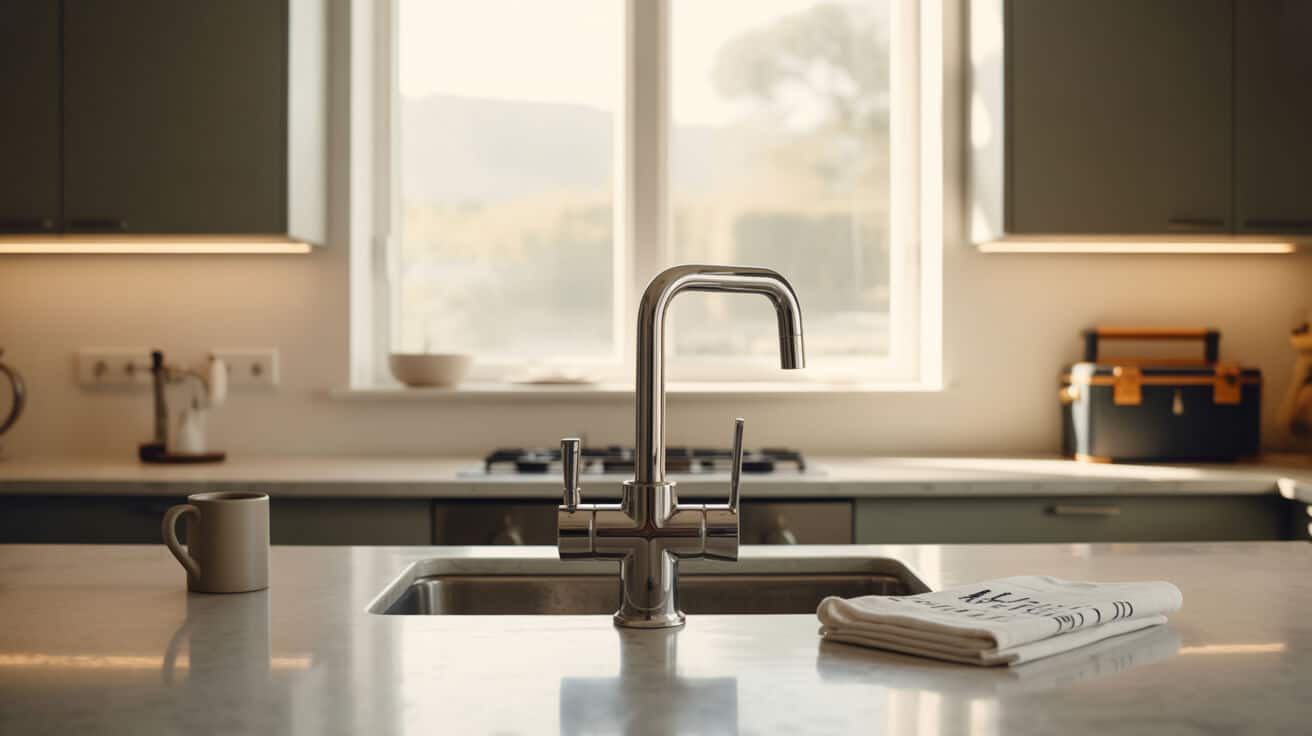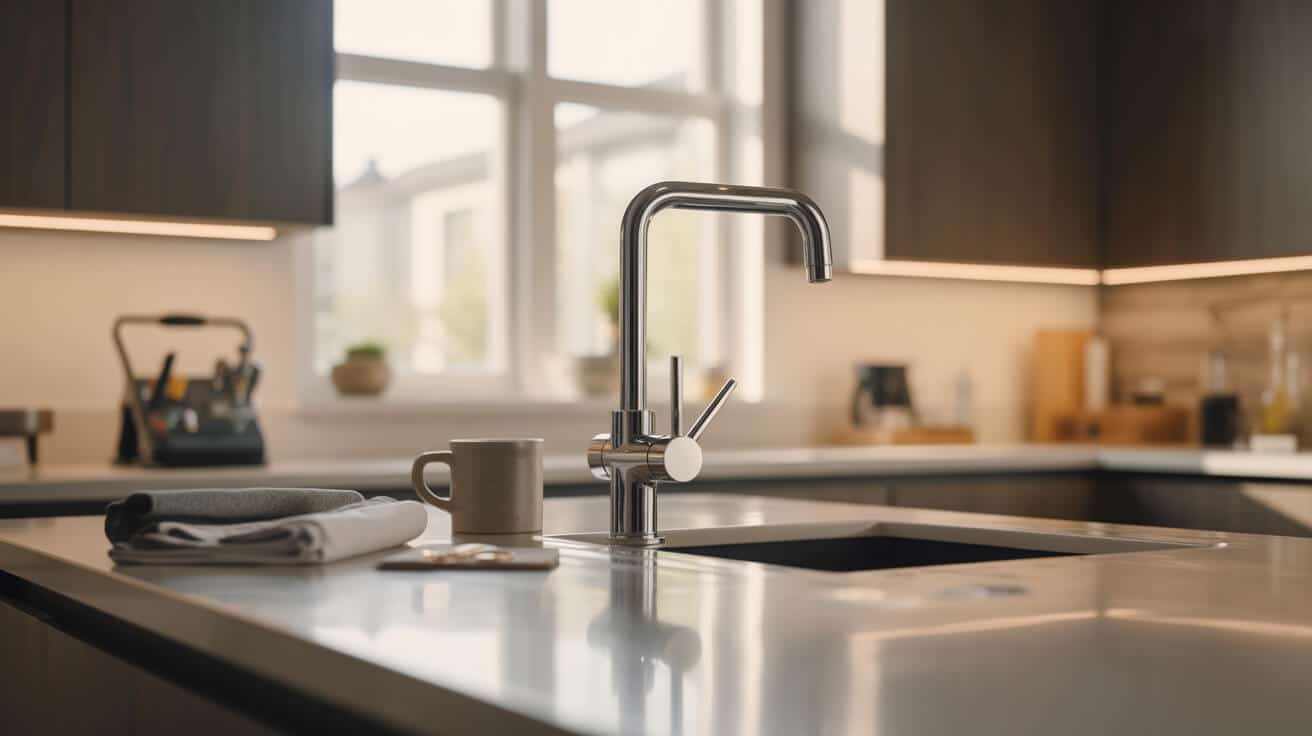The replacement of traditional taps with modern alternatives involves a multidisciplinary understanding of plumbing technology, property asset management, and compliance with updated water and safety standards. Through a process of thorough site assessment, component selection, precise installation, and post-replacement validation, organisations and homeowners safeguard the integrity, utility, and long-term valuation of their properties. Properties benefit from improved usability, minimised leakage and maintenance, optimised resource consumption, and documentation that satisfies insurers, facility auditors, and health inspectors. Skilled service providers such as Plumbers 4U offer expertise through transparent process management and adherence to regulation, supporting a seamless transition to high-performance tap systems.
Etymology or name origin
The term “tap” is derived from Old English ‘tæppa,’ originally denoting a stopper or plug. In the United Kingdom, “tap” refers to a device for regulating the flow of water, while in North America, the analogous term is “faucet.” Advances in tap design over time are signified by the qualifier “modern,” describing fixtures aligned with late twentieth-century and subsequent innovations. These incorporate features such as single-lever mixing, ceramic disc operation, touchless actuation, and integrated filtration, each reflecting advances in engineering and public health research.
Overview / context
Tap replacement in modern property management is propelled by escalating regulatory demands for water efficiency, a drive toward sustainable asset operation, and evolving expectations of comfort and accessibility. National and international water authorities mandate the use of approved fittings and materials, aiming to conserve resources and reduce contamination risk. In high-density and multi-tenant housing, systematic replacement underpins routine maintenance schedules, compliance inspections, and refurbishment initiatives, while in commercial settings, functional upgrades minimise downtime and operational hazards.
User organisations—ranging from single-dwelling homeowners to estate landlords and facilities directors—must balance lifecycle cost, instal complexity, and functional utility against prospective gains in efficiency, reliability, and compliance. Planned replacements, whether for asset renewal, tenant turnover, or regulatory audit, are best executed through a methodical approach—beginning with assessment and progressing through validated installation, demonstrating both cost-effectiveness and legal diligence.
History
Origins
Early water-dispensing devices date back to antiquity, where wooden stoppers, bronze valves, or primitive levers managed the distribution of water from public cisterns or private wells. Archaeological finds from Roman and Persian infrastructure illustrate basic innovations in flow control, critical to sustaining urban populations and gardens.
Industrial emergence
The industrial era introduced standardised brasswork, mass-manufactured taps, and the widespread use of screw-down washers. Improved metallurgy enabled uniform threading and the coupling of taps to emerging copper and lead distribution networks. These developments supported the rapid expansion of indoor plumbing across urban Europe and North America, transforming daily access to safe water.
Contemporary evolution
Post-war decades witnessed the ascendancy of ceramic disc valves, facilitating precise, low-wear mixing of hot and cold flows. Design trends favoured monobloc mixers, minimalist forms, and corrosion-resistant alloys. Touch-sensitive and sensor-activated taps emerged in public, healthcare, and hospitality facilities, responding to infection control imperatives and accessibility mandates. Regulatory bodies instituted the Water Supply (Water Fittings) Regulations 1999, followed by stricter efficiency requirements and anti-scald protections in subsequent code editions. Today’s landscape is characterised by increasing integration between tap technology, system management, and asset monitoring, with companies like Plumbers 4U leveraging technical advancements to provide seamless, regulation-compliant solutions for a broad client base.

Concept / description
Modern tap replacement is the process of decommissioning an existing tap and fitting a new device that meets current standards for safety, efficiency, and user preference. Central to this practice is compatibility between the new tap and existing site constraints, including pipework size, water pressure, fixing dimensions, and the design of the mating surface. Service providers conduct a risk and compatibility assessment, select fixtures based on WRAS approval or equivalent certification, and prepare for dynamic installation conditions, such as confined access under sinks or the presence of legacy materials.
The replacement workflow is structured around sequential best practices: shutting off water supply at the most appropriate isolation point; draining and depressurizing the system; carefully disconnecting the legacy tap using suitable tools (e.g., a basin wrench, adjustable spanner); fitting the new tap in accordance with manufacturer instructions and prevailing codes; and performing a sequence of system tests. Documenting the process—via job sheets or digital records—is now routine for asset tracking and warranty support.
Modern tap design addresses operational priorities: smooth single- or dual-lever mixing, pressure-appropriate aerators, anti-scald and anti-splash technology, and material choices (typically low-lead brass, stainless steel, or WRAS-approved polymers) that resist corrosion while supporting hygiene. Increasingly, installations involve additional devices such as isolation valves or check valves to control backflow and facilitate future servicing.
Functionality / purpose / applications
Operational advantages
Modern tap systems optimise water delivery, user comfort, resource conservation, and maintenance requirements. Enhanced sealing and advanced cartridge mechanisms reduce drips and minimise service intervals, while glass-smooth motion under single or dual control couplers makes operation intuitive, especially for children, the elderly, or those with limited dexterity.
Strategic applications
Organisations with significant property assets leverage systematic replacement to extend product life cycles, minimise unscheduled repairs, and improve documentation for regulatory and insurance purposes. Replacement of traditional wheel-handle or non-compliant taps provides added value by enhancing EPC (Energy Performance Certificate) assessments, which reflect the efficiency and sustainability of building utility infrastructure.
Safety & hygiene
Sensor-activated taps, anti-microbial finishes, and flush-through cleaning protocols are especially beneficial in healthcare, hospitality, and high-occupancy sites, addressing cross-contamination and hygiene risk. Many installations now incorporate thermostatic mixing valves (TMVs) to control output temperature within stipulated ranges, protecting users from scald incidents.
Regulatory/tenant compliance
For landlords, maintaining a compliant suite of taps is essential for passing safety inspections and meeting tenant expectations. Well-chosen modern taps simplify future maintenance and auditing; clear documentation and standardised asset lists aid in compliance with rental licencing and local council requirements.
Classifications / types / variants
Design-based categories
- Monobloc mixers: utilise single-body construction, allowing the user to control both flow and temperature with one lever. Ceramic disc cartridges ensure a consistent seal and facilitate easy user actuation.
- Dual-handle mixers: separate hot and cold streams, favoured for applications requiring granular temperature control.
- Pull-out spray mixers: feature an extendable hose and spray head, particularly advantageous for food service, catering, or utility sinks.
- Wall-mounted taps: are selected for minimalist design, ease of cleaning, or when basin counter space is at a premium.
- Self-closing valves: employ spring or pneumatic action to automatically stop flow—popular in commercial, educational, or public washroom scenarios.
Technology-based variants
- Sensor/touchless taps: apply infrared or capacitive technology to detect hand presence, conserving water and supporting infection control protocols.
- Filtered water taps: integrate carbon or ceramic cartridges, improving taste and reducing chemical or biological contaminants.
- Boiling water taps: produce near-instant hot water directly, via under-sink tanks, eliminating the need for separate kettles and supporting efficiency in office or hospitality applications.
- Thermostatic mixer models (TMV2/3): are mandated in hospitals, care homes, and some rented accommodation to minimise the risk of scalding and enable safe tap use for vulnerable populations.
| Tap Type | Main Feature | Typical Use |
|---|---|---|
| Monobloc Mixer | Single-lever, ceramic | Residential |
| Dual-Handle Mixer | Independent temperature | Traditional |
| Pull-Out Spray | Flexible, extendable | Kitchen/Utility |
| Wall-Mounted | Easy clean, minimalist | Bathrooms |
| Sensor/Touchless | Hygiene, timed shutoff | High-traffic |
| Boiling Water | Instant hot water | Office, Café |
| Filtered Water | Internal water philtre | Kitchen |
| Thermostatic Mixer (TMV) | Temperature control | Healthcare |
| Self-Closing | Controlled flow timing | Commercial |
Systems / tools / methodologies
Site assessment and planning
Property professionals and qualified plumbers first assess the tap location, examining water supply type (mains or gravity-fed), pressure, and access. Measurements are made for pipe diameter, base aperture, and reach. Additional consideration is given to under-sink space, proximity to electrical outlets, and compatibility with isolator valves.
Removal of existing tap
Water supply isolation is critical—either via a dedicated service valve or property main. Any stored water is drained by opening downstream outlets. The existing tap is then detached, often involving removal of lock nuts with a basin wrench, loosening of compression or push-fit connectors, and careful manoeuvring to avoid damaging surrounding cabinetry or sanitaryware.
Installation of new fixture
The selected tap is inserted through the mounting aperture, with sealing washers placed as directed. Flexi tails, copper tails, or integrated connectors are fixed according to design. Joints are made using WRAS-approved compression or push-fit fittings, with PTFE tape used sparingly to support leakproof seals. Mounting nuts are tightened evenly, and any deck plates or covers are attached for a finished appearance.
Testing and commissioning
On completion, the supply is gradually restored and all joints, hoses, and the tap base are checked for leaks. The tap is flushed to clear debris and air, and flow and temperature are calibrated. For TMV or pressure-dependent taps, validation tests ensure correct performance under varied supply conditions.
Documentation and aftercare
Photographic or digital record keeping, manufacturer warranty cards, and instruction sheets are compiled in the property or asset register. Tenants or users receive advice on routine aerator cleaning, scale management, and what to do in case of unexpected leaks or flow variation.

Tools, components, and materials
Essential tools
Professional installations typically require:
- Basin wrench (for hard-to-reach nuts)
- Adjustable or box spanner sets
- Flat and cross-head screwdrivers
- Tube and pipe cutters/cleaners
- Inspection mirrors, flashlights
- Leak detection and pressure gauges
Components
- Taps (WRAS, KIWA, or BBA approved)
- Flexible hoses (stainless steel or reinforced polymer braid)
- Isolation/service valves (ball, check, or lever)
- Compression and push-fit connectors
- Aerators, ceramic cartridges, replacement washers, and gaskets
- Mounting kits (nuts, plates, foam/rubber seals)
- Pipe inserts, reducers, and sleeves
| Component | Function | Regulatory Note |
|---|---|---|
| WRAS Hoses | Flexible supply | Required for compliance |
| Ceramic Disc | Sealing/mixing | Lifecycle durability |
| TMV Valve | Anti-scald/Temp control | TMV2/3 for high-risk |
| Deck Plate | Aesthetics/sealing | — |
| Isolator Valve | Shut-off/future service | — |
Materials
Stainless steel, low-lead brass, high-quality engineered plastics, and composite ceramic (for cartridge operations) are standard. All wetted parts must conform to national and local requirements for durability and water safety.
Stakeholders / entities involved
- Homeowners and tenants: Seek improvements in usability, comfort, water quality, and compliance without incurring excessive cost or disruption to routine.
- Landlords and letting agents: Must demonstrate full compliance with water and building regulations while managing lifecycle cost and tenant communications.
- Facilities and property managers: Operate at scale, requiring systematic asset management, lifecycle planning, and support protocols to minimise unplanned downtime.
- Business/commercial property operators: Focus on uptime, documented safety, user hygiene (especially in hospitality/healthcare), and productivity impacts.
- Plumbers/heating engineers: Bring certified expertise, technical problem solving, code-compliant practice, and site documentation as trusted advisors.
- Regulators and standards bodies: Establish compliance frameworks, audit performance, and provide formal certifications for products and installers.
- Manufacturers/distributors: Develop products to meet market and regulation demands, support installer and end-user knowledge with documentation and warranty service.
Legal / regulatory / ethical considerations
Statutory framework
- Water Supply (Water Fittings) Regulations 1999: mandate the exclusivity of approved materials and fittings in England and Wales, requiring WRAS certification for key components. These rules are enforced at the point of sale, installation, and periodic review by local authorities.
- Building Regulations (Part G): address safe delivery of domestic hot water, specifying anti-scald protections, maximum temperature at outlets, and prevention of backflow contamination.
- Landlord and commercial obligations: include regular inspection, test, and maintenance documentation, as well as responsive upgrades after audits or recurring tenant complaints.
- TMV2/3 standards: require use of advanced thermostatic mixing devices in high-risk locations, particularly where occupants may be vulnerable.
Warranty and documentation
Installer and asset managers must maintain accurate records of work carried out, including date, part/batch number, and specification of compliance features. manufacturer warranties may require proof of certified installation, periodic maintenance, and adherence to care instructions.
Ethical protocol
Service providers are expected to follow ethical frameworks—specifying safety, fairness, and non-deceptive advice. No-cost or low-cost options should be provided where possible for vulnerable users, and site documentation must facilitate continuity of care.
Performance metrics / data / measurements
Flow rate and operational pressure
Modern tap systems must conform to minimum and maximum operational flow rates (typically 4–15 l/min.), consistent with property type and user needs. pressure testing at installation validates compatibility and leakage resistance.
Durability and reliability
Metrics such as mean time between failure (MTBF) and number of cycles to wear or material fatigue provide benchmarks for warranty duration and expected service life. Installers record defect or replacement events for asset managers.
Water and energy savings
EPC ratings, flow restrictor data, and aerator efficacy are measured relative to baseline or previous system performance, allowing quantification of enhancements from each replacement event.
Risk and documentation
Leak incidence, unplanned outage, and tenant-reported issues are tabulated to inform maintenance planning, regulatory compliance, and insurance assessment.
| Metric | Typical Benchmark | Measure |
|---|---|---|
| Flow Rate | 4–15 l/min. | Property type |
| MTBF (Ceramic Disc) | >200,000 cycles | Factory/field test |
| Leak Incidence | <0.5% installed base | Annual reporting |
| EPC Improvement | Up to 2 rating bands | Post-upgrade audit |
| Water Saving | 10–60% (retrofitted) | Metre reading |
Challenges / barriers / limitations
Technical/operational barriers
- Legacy pipe size mismatches, inaccessible mounting points, or lack of isolation valves complicate the instal process.
- Corrosion or scale can seize fittings, requiring specialist removal tools or, in some cases, partial rerouting of system.
- Variance in supply pressure—particularly in older buildings—may render some modern fixtures under- or over-performant.
Social/economic constraints
- Cost sensitivity, especially in larger housing schemes or commercial property portfolios.
- Perception of disruption or risk of property damage in occupied spaces.
- Knowledge and training gaps among owner-operators or unlicensed/uncertified installers.
Regulatory/policy gaps
- Occasional lack of enforcement or clear guidance on emerging technology.
- Delayed adoption of new standards in legacy building stock.
- Limited documentation or asset management practice, undermining long-term reliability and compliance.
Impact / influence / legacy
Widespread adoption of modern tap replacement has led to pronounced improvements in water conservation, especially where paired with systematic asset management and professional installation. For multifamily and commercial properties, scheduled replacement and up-to-date documentation facilitate reduced downtime, lower insurance liability, and superior tenant satisfaction.
Properties fitted with recent, compliant tap systems demonstrably retain asset value and perform strongly under health, safety, and sustainability audits. Modernization efforts have contributed to resilience against infrastructure risk, ensuring compliance with evolving standards, and improved long-term return on investment for owners and asset managers.
Future directions, cultural relevance, and design discourse
Technological trends
The adoption of digital, app-connected flow monitors, and adaptive tap systems represents a new frontier for water use optimization and regulatory compliance. Material science research is enhancing resistance to biofilm, limescale, and corrosion, increasing the longevity of installed assets.
Design and sustainability
Design codes and public preferences are trending toward minimalist, accessible fixtures and environmentally conscious materials. Modular, replaceable cartridges, and recyclable housings expand life expectancy and reduce the environmental footprint of plumbing upgrades.
Societal and cultural role
The integration of sensor and touchless technology is now synonymous with heightened hygiene standards, a paradigm shift fueled by recent public health concerns. The intersection of comfort, safety, and eco-responsibility positions tap replacement as a symbol of modern property values and regulatory excellence, with implications across all sectors of society.

